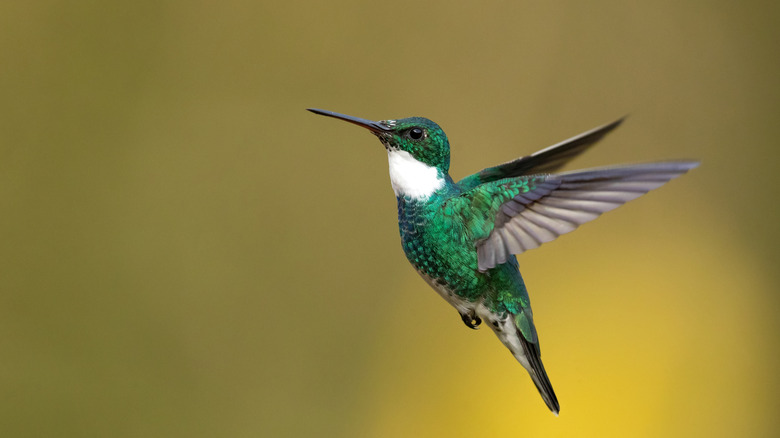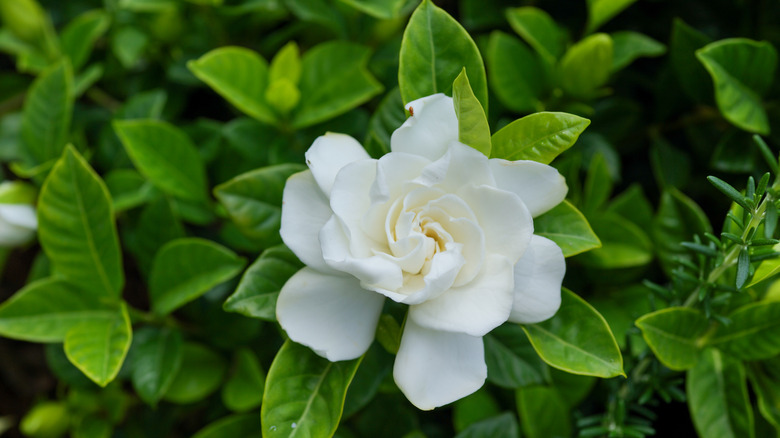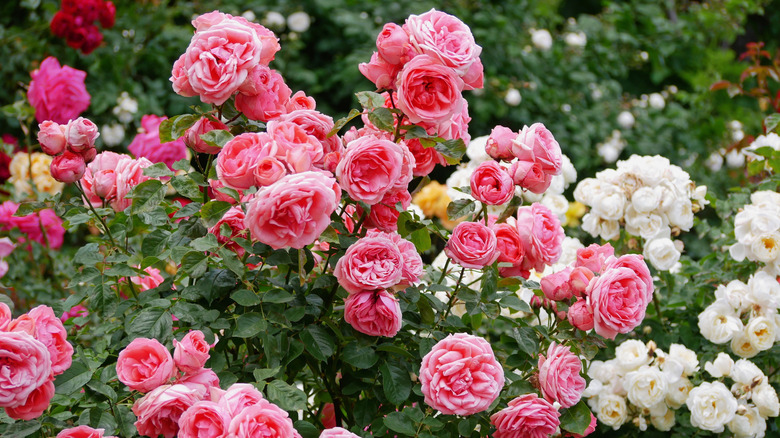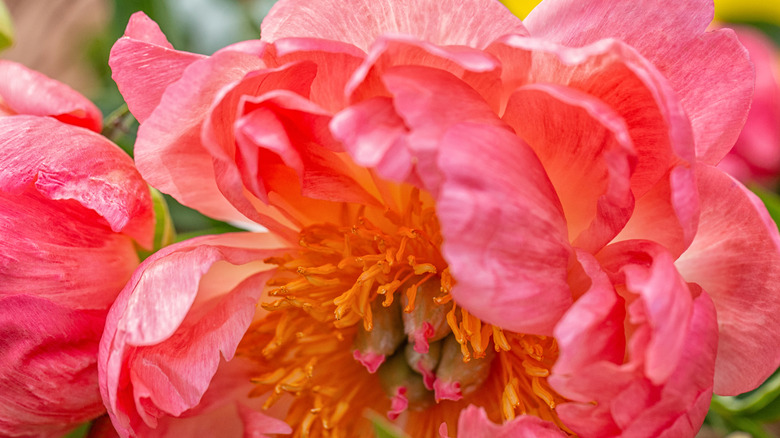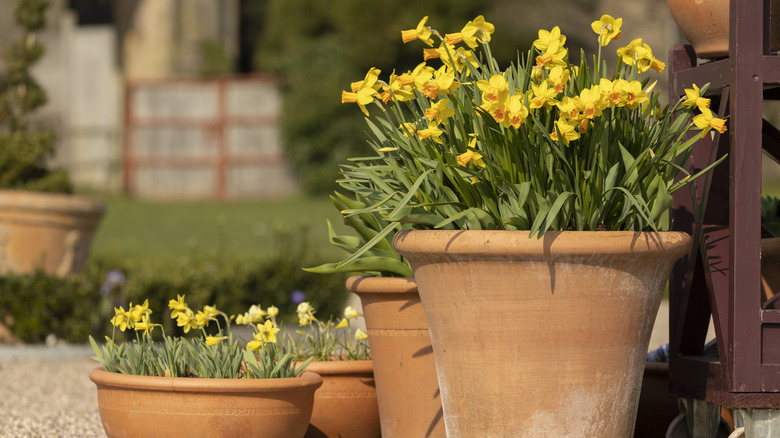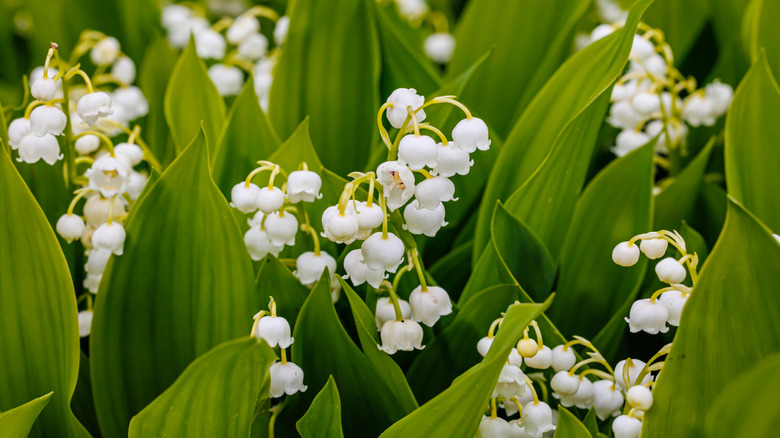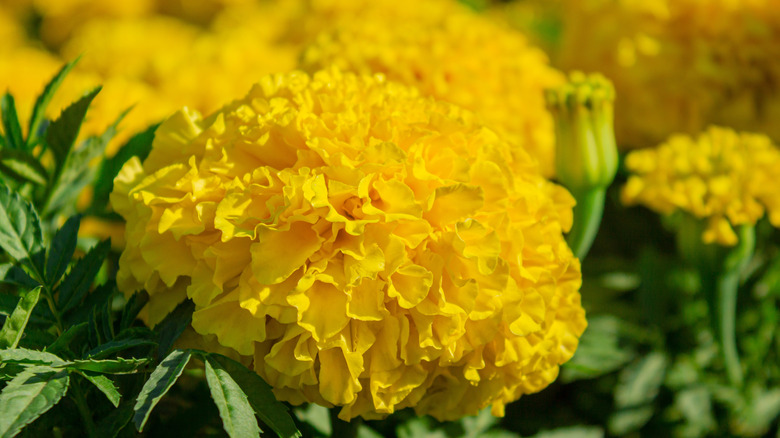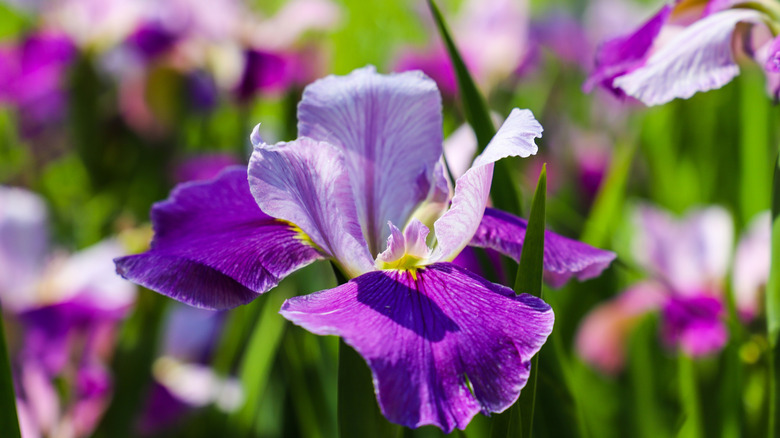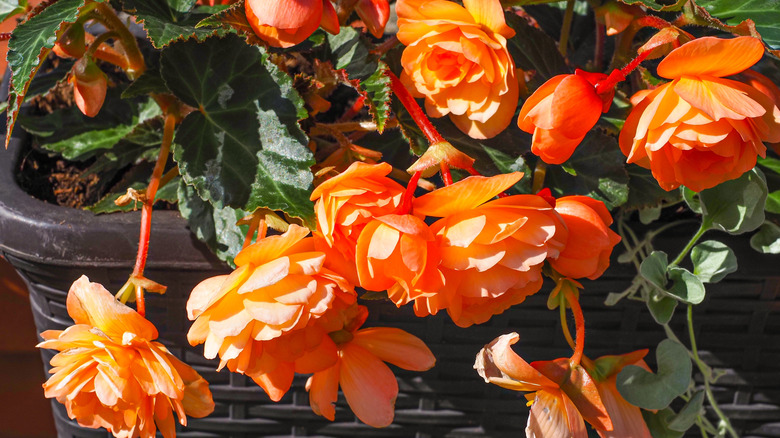The 9 Worst Flowers To Plant If You Want To Attract Hummingbirds To Your Yard
When it comes to designing the perfect hummingbird haven in your backyard, not all flowers are created equal. These little birds are incredibly picky visitors, and they have specific preferences and needs that only some flowers can fulfill. For example, hummingbirds struggle to drink nectar with their small, straw-like beak when flowers are too densely packed with petals, like peonies or marigolds. They ignore some flowers simply because they don't have a lot of nectar to offer, like roses and daffodils.
To start a pollinator garden, it's important to look at which plant species can actually do the job. What hummingbirds like most are tubular flowers full of nectar. They're most attracted to native flowers and bright red colors, and more importantly, they need hovering room around the flower because they feed while flying in place. Once you figure out the perfect recipe, you'll be thrilled to have garden visitors as delicate and pretty as hummingbirds. And if you're still struggling to attract hummingbirds to your yard even after growing the right species, consider DIYing a hummingbird feeder with household items, or buying one.
Gardenias
Who doesn't love the sight of a gentle gardenia (Gardenia jasminoides), with its delicate flowers and shiny white petals? Hummingbirds, that's who. Don't plant gardenias if you want hummingbirds to visit. The main reason is that gardenias are not plants that are native to the United States, and even if you were, they don't have a ton of nectar. Hummingbirds like the plants they know and evolved with over time, so they prefer native plants. Planting flowers that are native to your geography is the best way to make hummingbirds happy.
Roses
This other star of the garden falls short when it comes to bringing hummingbirds to your garden. Roses (Rosa) are stunning, and you'll often hear their praises sung about how much pollinators love them. The thing is, roses mostly produce pollen, which other pollinators (like bees) feed on. Hummingbirds, however, don't consume much pollen and are much more concerned about nectar. Sadly, roses don't produce enough nectar for hummingbirds to be interested. If you see hummingbirds hanging around your rose bush, they might simply be eating little bugs from its flowers.
Tulips
Another star flower that's lackluster in nectar is the tulip (Tulipa). While they have the bright colors that hummingbirds might otherwise like, they don't provide much food. In addition, hummingbirds are migratory animals. In the colder months, they head south to Mexico and Latin America for warmer weather. Then, they head back north into the United States during spring. Depending on the region, these little birds start to show up between April and May. Since tulips tend to bloom early in the season, hummingbirds don't have much to be frustrated about when it comes to their lack of nectar.
Peonies
A key element that makes a flower desirable in the eyes of a hummingbird is its shape. If you've ever seen a hummingbird, you've likely noticed its long and skinny beak. Inside of that beak, there's is an equally long and skinny tongue that hummingbirds use to suck the nectar from plants. As a result, they like tubular-shaped flowers. A fluffy and dense flower like the peony (Paeonia lactiflora) would be tough for the hummingbird to drink from. Though they can produce some nectar, peonies are unlikely to be of any value to hummingbirds.
Daffodils
Because of their shape, many people think that daffodils (Narcissus pseudonarcissus) would be a great choice for a pollinator garden. Yet, the horticultural varieties of daffodils used in gardens today are the result of intense genetic breeding, which created what we know as the large colorful flower (as opposed to wild daffodils, which are smaller and paler). As a result of such genetic manipulation, daffodils now produce very little nectar, and they're quite unpopular among hummingbirds.
Lily-of-the-valley
Lily-of-the-valley (Convallaria majalis) is an incredibly cute addition to any garden. With its little droplet-like white flowers, this plant has a charm that's hard to replicate. But don't plant them in your garden hoping to attract any hummingbirds. These delicate flowers don't produce the nectar that hummingbirds love so much. In addition, their downward and droopy design close to the ground makes it difficult for hummingbirds to access with their beaks while hovering.
Marigolds
Marigolds (Tagetes) come in over 50 species, so it's impossible to put all of them into the same bag and say whether they, as a species, attract hummingbirds or not. The key is to look at the shape of the flower and whether it's a single or double-petal variety. As a rule of thumb, hummingbirds cannot access nectar when it's buried under dense layers of petals. Some single-petal varieties of marigolds can still be of use to hummingbirds, but the more common thick flower variety is largely useless.
Irises
While some varieties of irises have nectar and get visited by bees, they typically don't seem like a hit among the hummingbirds. There is some evidence that irises can be pollinated by hummingbirds, so unlike some other varieties in this list, this isn't a full stop. It mostly appears that irises' blue and purple colors make them less attractive to hummingbirds than some of their red counterparts. Therefore, don't hold back if you love the look of irises and want to plant some in your garden, but pair them up with flowers that attract hummingbirds.
Double begonias
When reading up on plants that attract hummingbirds, you're likely to hear about begonias. These are lovely flowers that are full of nectar and come in red and yellow hues that hummingbirds love. However, there are some double-petal varieties of begonias that could leave you disappointed if you plant them hoping to attract hummingbirds. Double-petal varieties (like Begonia x tuberhybrida) are often too thick and dense for hummingbirds to access the nectar.
